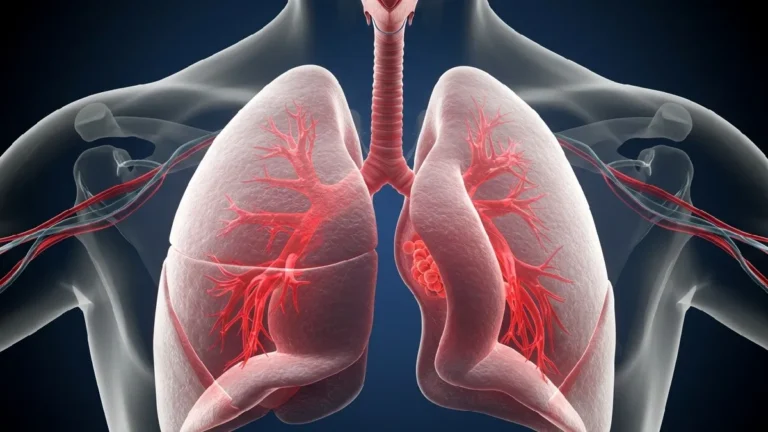Diabetes is considered one of the first silent pandemics, as the symptoms are often not sufficiently visible. The Pan American Health Organization (PAHO) estimates that at least 62 million people suffer from this chronic disease in the region so it is important to know how to recognize it and identify its consequences.
Insulin is a hormone that regulates blood sugar and is produced in the pancreas. When this organ does not function properly and does not produce enough of this hormone, or when it is not used correctly, an increase in blood sugar occurs, called diabetes mellitus. This chronic disease can damage several organs and systems of the body in the long term.
It is considered to be a disease that has no cure, but is treatable and can be controlled through a healthy lifestyle and medication, says Victor Ramirez, endocrinologist.
Types of Diabetes
There are three main types of diabetes. The first is less common, while type 2 diabetes accounts for more than 80 per cent of cases worldwide.
- Type 1 Diabetes: This is characterized by the body not producing insulin, so the treatment is based on the administration of this hormone. Type 1 diabetes accounts for 5 percent of patients with this disease and the causes are unknown, so it cannot be prevented. Its symptoms are excessive urine excretion, thirst, constant hunger, weight loss, visual disturbances and fatigue.
- Type 2 Diabetes: This occurs when people develop resistance to insulin, which causes a lot of glucose (blood sugar) to build up in the blood. It can only be diagnosed when the condition has been developing for several years and complications have appeared. The PAHO indicates that obesity, overweight and physical inactivity are among the causes of the increase in cases of this type of diabetes.
- Gestational diabetes: Increased blood glucose levels occur during pregnancy and reach levels that, despite being higher than normal, are lower than those established to diagnose diabetes, according to the World Health Organization (WHO). People with this type of diabetes have a higher risk of suffering complications during pregnancy and childbirth.
Although it is not considered a type of this disease, specialists emphasize prediabetes. “ It is the previous step to this chronic disease. It is very important because it is considered that blood sugar levels are higher than normal, but they are not yet considered high enough to diagnose type 2 diabetes. In addition, it does not generate symptoms, so approximately 80% of people who suffer from it do not know it,” says Gustavo Ortiz, an internist.
How do I know if I have diabetes?
Before developing type 2 diabetes, most people have prediabetes. The problem is that this condition does not have clear symptoms, but there are risk factors for developing this chronic disease.

Ortiz mentions that being over 45 years old, having some cardiovascular disease, being obese or overweight, leading a sedentary lifestyle, having previously altered glucose, polycystic ovary syndrome, gestational diabetes, high triglyceride levels, high blood pressure or having a family history of this disease, makes you prone to suffer from diabetes 2.
If you have any of the above factors and have the following symptoms, you must visit a doctor, because you may be facing a case of diabetes or prediabetes: excessive thirst, frequent urination, an overwhelming and uncontrollable urge to eat, blurred vision, lack of energy, unexplained weight loss, and slow wound healing.
Consequences of diabetes
All types of diabetes can cause complications in various parts of the body and increase the risk of premature death. They also cause an increase in related risk factors, such as being overweight or obese.
The WHO considers this disease to be one of the main causes of blindness, kidney failure, heart attacks strokes and lower limb amputation.
In addition, people with diabetes have up to twice the risk of suffering from a heart attack and a stroke. “Diabetic retinopathy is a major cause of blindness and is the result of damage to the small blood vessels in the retina that accumulates over time. 2.6% of global cases of blindness are a consequence of diabetes,” says PAHO.
Diet for diabetics
Blood sugar comes from carbohydrates, so if you have risk factors or a diagnosis of diabetes, it is important to take care of your diet and avoid certain foods to prevent an increase in glucose in the body.

The European Medical Institute of Obesity (IMEO) has created a food traffic light, which “turns on the red light”, that is, it recommends avoiding foods containing sugar, butter, margarine and bacon; sugary drinks; red meat; honey; sugary dairy desserts and white pasta, rice and bread.
For a healthier diet that is suitable for preventing diabetes and obesity, Carmen Escalada, a clinical nutritionist at IMEO, explains the “food traffic light” and recommends it for people who suffer from diabesity (a situation in which a person has type 2 diabetes and is also obese or overweight) or are at risk of suffering from it.
Red light (limit your consumption as much as possible or avoid it).
- Sugar and products containing it, such as baked goods, biscuits, jams and jellies.
- Butter, margarine and bacon, re rich in saturated fats and trans fats.
- Sugary drinks, such as juices, sodas and energy drinks, are high in sugar and low in nutrients.
- Red meats, which are rich in saturated fats.
- Honey, which contains abundant sugars.
- Sugary dairy desserts are high in calories, rich in sugar and not very filling, which is why people tend to consume them in excess.
- Pasta, rice and white bread cause blood sugar to rise rapidly and then fall at the same speed.
- Highly processed meats and sausages such as chorizo, salami, mortadella or sausages.
- Fish substitutes such as surimi or ‘gulas’, are made from flours with no nutritional value and high in salt and sugar.
- Low-cocoa or white chocolates, rich in sugar and saturated fats and with a very high caloric intake.
- Culinary preparations such as fried, battered or breaded foods, significantly increase the calories in dishes.
- Alcohol promotes the accumulation of visceral fat.
Yellow Light (consume moderately and/or occasionally)
- Fruits such as mango, banana, custard apple or grapes are healthy, but should not be overused due to their high sugar and calorie content.
- Nuts and seeds, in their natural or toasted versions, provide healthy fats but are very high in calories.
- Extra virgin olive oil, with a protective effect against diabetes, but is highly caloric.
- Whole wheat pasta, rice and bread are rich in fibre and can be a good source of energy if cooked and accompanied well.
- Tubers, ould be cooked and eaten after refrigeration so that starch is formed, which is absorbed in smaller quantities and has a prebiotic effect.
- Chocolate with a high cocoa content (minimum 85%), would be a good option when you want to eat something sweet, but which has a high caloric content.
- Non-caloric sweeteners, which do not raise blood sugar or have calories, but whose prolonged consumption is not healthy.
Green Light (consumed more and more frequently)
- Probiotic foods such as yoghurt, kefir or sauerkraut, help reduce blood glucose levels and improve insulin sensitivity.
- Fatty acids present in oats, garlic, artichokes or asparagus, stabilize blood sugar levels and the composition of the intestinal microbiota.
- Fruits such as apples, pears, oranges, tangerines and pomegranates are rich in fibre and antioxidants that promote satiety and reduce the risk of obesity.
- Vegetables and greens should be the basis of our diet, as they are high in fibre, vitamins and minerals, filling and adding colour to dishes, making them more attractive.
- Quality proteins such as chicken, turkey, rabbit, fish, seafood, eggs and legumes are essential for maintaining proper muscle mass.
- Spices and aromatic herbs, have blood sugar regulating, antioxidant, satiating or diuretic effects, and contribute to giving flavour to dishes without the need to add salt.
- Water, infusions and broths with a little salt, allow proper hydration, are essential for the proper functioning of the body, and also satiate without adding calories.





















+ There are no comments
Add yours